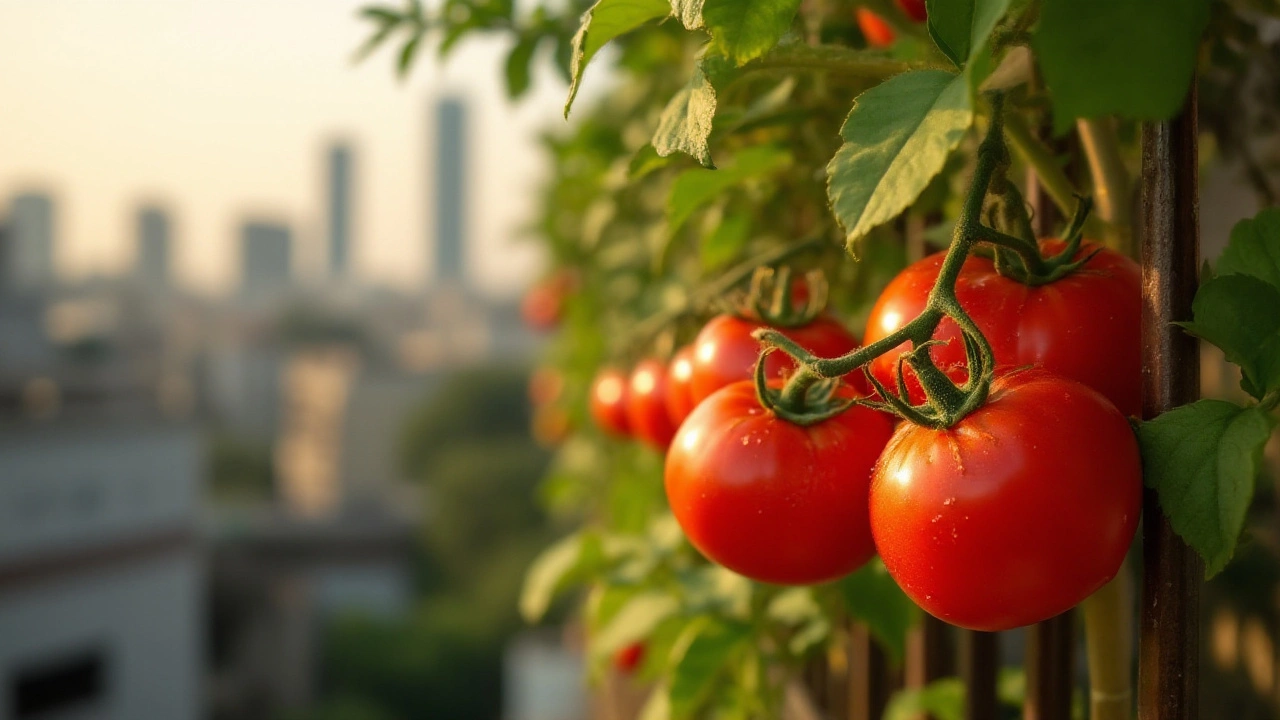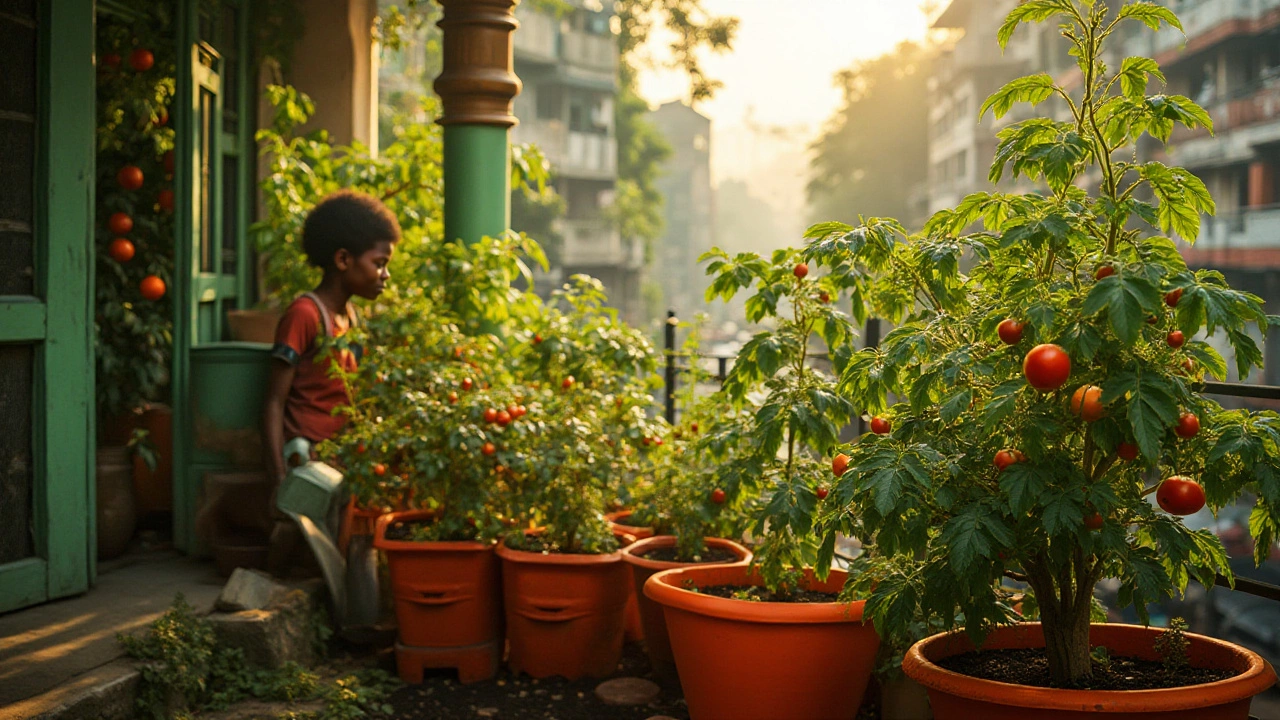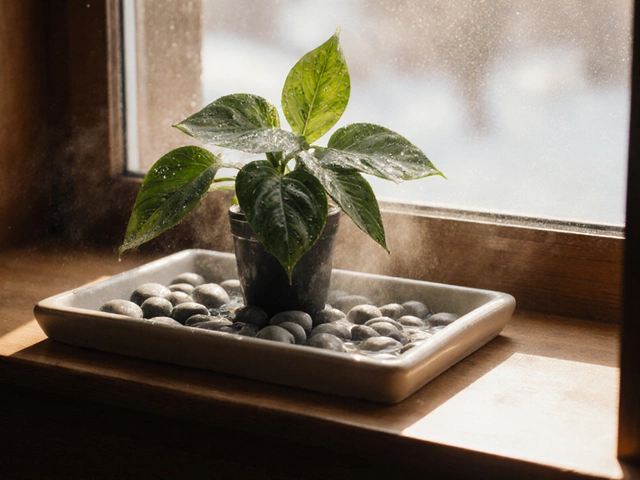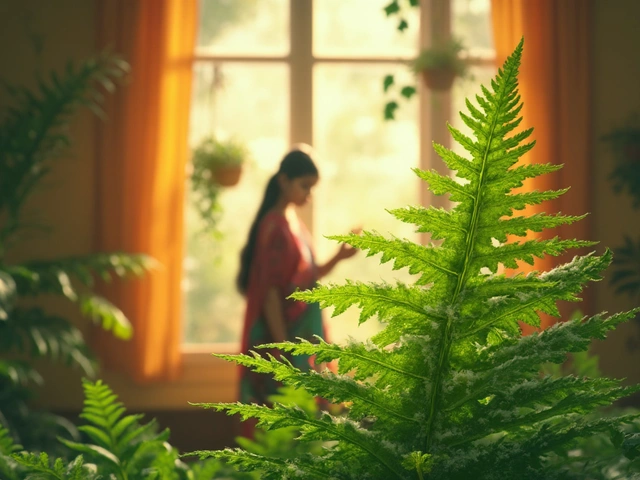Growing tomatoes in a bustling urban environment might seem a bit challenging at first, but with the right guidance, you can transform your balcony into a small but productive garden. Tomatoes are one of the most rewarding plants to grow. They are not only delicious but also bring a vibrant splash of color to any space.
So, how can you get started on your balcony tomato adventure? Let's cover the essentials—from which varieties to choose, to how to nurture them to full ripeness. With a little patience and knowledge, you'll soon be plucking fresh tomatoes only a few steps from your kitchen.
- Choosing the Right Tomato Varieties
- Setting Up Your Balcony for Tomato Plants
- Caring for Your Balcony Tomatoes
- Dealing with Common Challenges
- Harvesting and Enjoying Your Tomatoes
Choosing the Right Tomato Varieties
When embarking on the journey of balcony gardening, one of the initial and crucial decisions to make is choosing which type of tomato will thrive in your limited space. Tomatoes come in various sizes, colors, and flavors, and not all are suitable for container gardening. For balcony spaces, certain varieties stand out for their compact size and reliable yield. Cherry tomatoes, for instance, are a popular choice among urban gardeners. Their small size allows them to fit comfortably in pots, and they can produce a surprisingly large number of fruit. These delightful, bite-sized tomatoes are perfect for salads and snacks.
If you're aiming for a more traditional tomato experience, ‘Patio Princess’ is an excellent compact variety that comfortably grows in small containers without compromising on taste. Another option is the ‘Tiny Tim’ variety, which stays under two feet tall and is ideal for a sunny balcony. Also, consider the ‘Balcony’ variety—a determined plant specially bred for compact spaces, producing mid-sized tomatoes that are excellent for cooking and fresh consumption alike. Each of these varieties has proven to be resilient in small-scale spaces, making them dependable choices for any urban gardening endeavor.
"The secret to a flourishing balcony garden lies in the right plant selection to match your specific conditions," says Sarah Raven, a renowned horticulturist, famous for her expertise in urban gardening.
In choosing the perfect tomato, pay attention not only to the plant’s size but also to its sunlight needs and growth habits. Tomato plants love full sunlight, so if your balcony is west-facing and receives ample sun throughout the day, you have more options to try. However, if sunlight is scarce, opt for varieties that can tolerate partial shade. Indeterminate varieties can grow quite large and may require more space and staking, while determinate varieties stay more compact and are often described as bush types.
It’s fascinating to note that the color and flavor of the tomato can vary based on the variety, so if you’re eager to brighten up your salads, try the golden yellow ‘Sun Gold’ which has a sweeter, tangy profile, or perhaps the deep red ‘Black Cherry’ that adds a unique flavor to your dishes. Remember that each variety will bring its own unique set of care instructions and benefits. When in doubt, consult your local gardening center or fellow container gardening enthusiasts online—they can offer insights and personal experiences that are invaluable when making your selection. Armed with the right knowledge and a willingness to experiment, you'll find the perfect tomato to fit your space and culinary dreams.
Setting Up Your Balcony for Tomato Plants
Preparing your balcony to host vibrant tomato plants involves a few crucial steps, but fear not, each one is manageable and satisfying. Start by evaluating the space you have. The first consideration is the sun. Tomatoes crave sunlight, requiring at least six to eight hours of direct sun daily. Survey your balcony throughout the day to ensure it captures enough sunlight for these sun-loving plants. If sunlight is limited, consider supplemental lighting—LED grow lights can work wonders.
Next, think about containers. Traditional rows of tomatoes aren't feasible in confined spaces, but a good-sized pot can work just fine. Opt for containers that are at least 18 inches in diameter to offer roots ample room to grow. Think about drainage too. Plants despise waterlogged soil, so select pots with drainage holes, and use trays to catch excess water. A lightweight potting mix, rich in organic matter, will support your plants' nutritional needs.
Wind can be an unexpected adversary on balconies, potentially damaging plants or toppling containers. Consider windbreaks—thin mesh or strategically placed taller plants can deflect gusts without wholly obstructing airflow. If you're looking for security in numbers, grouping plants together may create a mini microclimate, helping maintain consistent humidity levels. As permaculture expert Toby Hemenway said,
"Plants thrive best when they mimic a natural community."
Maximize vertical space if the horizontal area is limited. Use trellises or cages to encourage climbing varieties. This practice not only saves space but also keeps plants healthy by promoting good air circulation. Shelving units can offer tiered growing opportunities, effectively doubling the usable area without crowding your balcony. It's a chance to combine aesthetic with function, creating an enchanting green wall over time.
Lastly, access to water is crucial. Ensure that water access is easy; lugging watering cans through your living quarters can quickly become a chore. Consistent hydration in containers is vital since soil tends to dry out faster in smaller spaces compared to a garden bed. Consider setting up a simple drip irrigation system or use self-watering pots to help manage this need. A good tip is marking or scheduling watering times—consistency can be the difference between luscious, home-grown tomatoes and plant despair.
| Item | Requirement |
|---|---|
| Sunlight | 6-8 hours daily |
| Container Size | Minimum 18 inches diameter |
| Soil Type | Lightweight potting mix |
| Watering | Consistent, with drainage |

Caring for Your Balcony Tomatoes
Caring for your tomato plants on a balcony requires a bit of dedication and understanding of their specific needs to ensure the best growth and yield. Tomatoes thrive with a balanced approach to watering, sunlight, and feeding. Firstly, watering is crucial. Too much water can drown the roots and lead to rot, while too little leaves the plant dry and stressed. Aim to water consistently, keeping the soil moist but not waterlogged. A good rule is to water deeply but less frequently. In the summer heat, this might translate into watering every day, especially if your balcony receives lots of sun. It's wise to check the top inch of soil regularly, and if it's dry, it's time to water.
Sunlight is another critical factor. Tomatoes need about six to eight hours of direct sunlight daily to thrive. If your balcony has limited sun exposure, consider using reflective surfaces to increase light exposure or opt for varieties bred for lower light conditions. Feeding your tomato plants is equally significant. A fertilization schedule with a balanced fertilizer can provide essential nutrients. Some experts recommend starting with a nitrogen-rich fertilizer at planting to encourage leaf growth, then transitioning to a phosphorus-heavy one as flowers appear to boost fruit production.
Pruning is also an essential part of caring for tomato plants. Regularly remove any yellowing or diseased leaves to keep the plants healthy. Pruning encourages better air circulation and focuses the plant's energy on producing fruit. Moreover, supporting your plants with cages or stakes helps prevent breakage from wind or the weight of the tomatoes. This approach keeps the plant upright, promoting air circulation and easier harvesting.
"To grow good tomatoes, knowledge is half the battle; attention throughout the growing season is the other." — Gardeners' Chronicle
Be wary of pests and diseases which can strike plants on any balcony. Tomato plants are prone to aphids, spider mites, and diseases like blight. Use organic pesticides or insecticidal soaps if pests become an issue. Keeping plants healthy by avoiding water sitting on leaves and maintaining good airflow can prevent many common problems. If you do spot a problem, act quickly to minimize damage and ensure a continued harvest.
Consistent monitoring and adjusting to your balcony’s specific environmental condition are key. If a particular approach doesn't work, don't be afraid to tweak it as the season progresses. Your balcony garden is a learning experience, and by observing your tomato plants closely, you'll get to know their particular likes and dislikes, leading to a flourishing tomato harvest just outside your door.
Dealing with Common Challenges
When nurturing tomato plants on a balcony, you'll likely encounter obstacles that'll test your gardening mettle. Space is the primary constraint, as the limited area of most balconies can restrict the number and size of the plants you can grow. To maximize your garden, choose compact, determinate varieties that don't require a large expanse and grow well in containers. Crafting a strategic layout that takes advantage of vertical space by using trellises or hanging baskets can significantly augment the number of plants you can manage, yielding a satisfying crop without overwhelming the area.
Aside from space, the amount of sunlight is another critical factor. Balconies, especially those in urban settings, might face obstructions from nearby buildings or walls that reduce sunlight duration. Tomatoes thrive in sunshine, requiring at least six to eight hours of direct light daily. You may find that shifting your pots throughout the day ensures they receive adequate exposure. For those harder-to-reach sun rays, reflective surfaces can help improve light coverage by bouncing sunlight towards the plants. Installing mirrors or using lighter-colored surfaces nearby could also enhance available light.
Watering is another frequent challenge. Containers dry out more rapidly than in-ground gardens, meaning consistent watering is crucial for healthy tomato growth. Over-watering can lead to root rot and other issues, so always ensure proper drainage in your containers. It can be beneficial to water in the morning, as it prepares plants for the day’s heat while reducing evaporation loss. A moisture meter can be a handy tool, aiding in determining exactly when your balcony garden needs hydration delights. As a general rule, when the top inch of soil is dry, it’s time to water.
Pest management is something every gardener contends with, and balconies are no exception. Common pests include aphids, whiteflies, and spider mites. Maintaining plant health through regular inspections and gentle cleaning can help forestall infestations. For instance, thoroughly checking the undersides of leaves and manually removing any pests can be highly effective. Consider utilizing natural remedies, such as spraying neem oil or introducing beneficial insects like ladybugs, to keep populations in check without harsh chemicals.
“The best way to control garden pests is to be vigilant,” says renowned horticulturist Charlotte Bruce. “Stay one step ahead, and you'll always have a fighting chance.”
Temperature fluctuations pose another threat to the stability of your plants. Balconies can situate plants in areas with extreme heat or exposed to chilly drafts. It's crucial to monitor weather conditions and adjust care routines accordingly. During hot spells, provide shade by draping a light netting over the plants, or move them into a cooler spot if possible. Conversely, when temperatures dip, cover plants with a breathable fabric at night to ward off frost.
Emphasizing these challenges should not discourage the aspiring balcony gardener. In fact, season by season, resolving such issues can prove more rewarding than the momentary frustration they cause. Successfully tackling these challenges can lead to bountiful harvests of juicy, flavorful tomatoes, delighting not only your palate but also elevating your skill set as a seasoned urban gardener.

Harvesting and Enjoying Your Tomatoes
Having nurtured your tomato plants with care on the balcony garden, the time comes when those green orbs of potential ripen, blushing into shades of red, yellow, or even purple, depending on the variety you've chosen. Knowing when and how to harvest is crucial to enjoying the full bounty of flavors that these urban-grown delights can offer. Timing here is everything. Harvesting too early might leave you with fruits that lack flavor, while waiting too long can lead to overripe or split tomatoes. Look for vibrance in color and a slight give when gently squeezed; these are key indicators that your tomatoes are ready to be picked.
Once you've established that your tomatoes are ripe, it's time to take action. Make sure to use a gentle hand when plucking them from the vine. It's best to support the fruit with one hand and use the other to sever the stem close to where it attaches to the tomato. This reduces stress on the plant and ensures it remains healthy for future growth. Some experts even advise harvesting in the cooler hours of the morning to minimize plant stress, a tip from seasoned gardeners.
Famed gardener and writer, Monty Don, once shared, "The taste of a freshly picked tomato from your own plant is a moment where all your hard work comes to fruition. It's a marvel of nature."
Now, onto the enjoyable part—savoring the fruits of your labor. Tomatoes are incredibly versatile, lending themselves to a variety of dishes. From salads to sauces, or even eaten fresh with a sprinkle of sea salt, they make every meal a little more special. Roasting tomatoes with olive oil and herbs can intensify their flavor, offering a sweet, caramelized touch.
If you're inclined towards preserving your bounty, consider creating a homemade tomato sauce or chutney. Canned or jarred tomatoes can last months, bringing warmth to winter dishes. Proper storage is essential; if you decide to keep your tomatoes at room temperature, consume them within a few days to savor their peak flavors. Alternatively, refrigeration can prolong their shelf life slightly, but be aware it might dull the flavor.
Lastly, remember that every tomato you harvest is a stepping stone to better gardening skills. Each season provides insights for enriching your urban gardening journey, whether it’s choosing different varieties next year or altering your pruning techniques. So, with the right care and a bit of patience, you’ll find that each juicy bite is more than just food—it’s the taste of your success in the world of container gardening.





